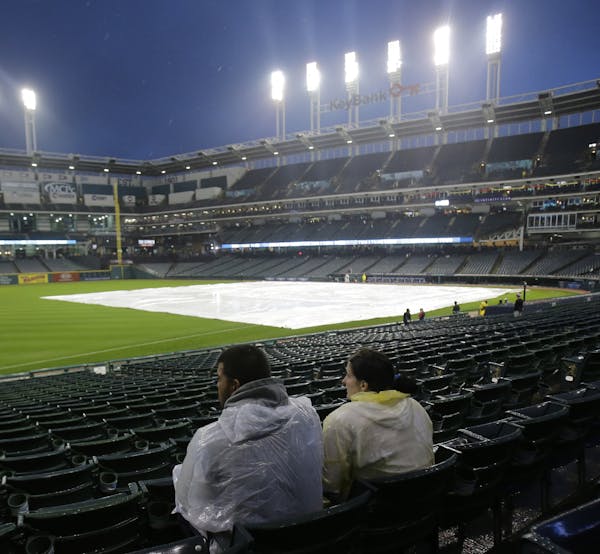A common narrative being floated around during the past several hours is that the Twins caught a bad break in having to play a doubleheader at Cleveland because of Tuesday's rainout instead of staying on their normal schedule with one game Tuesday and one game today.
On some levels, that's true. The most glaring reason is that it stretches an already thin pitching staff and makes it so that Kyle Gibson, one of their more durable and trusted starters — though not necessarily a more dominant one since he's among five Twins starters who has made at least 16 starts this year who has an ERA between 3.96 and 4.10 — is no longer on schedule to pitch the final day of the regular season. It throws the rotation into a bit of flux, though again it's not like you're losing an ace in exchange for a fifth starter.
On a purely mathematical level, without specific considerations for rotations, particulars about the Twins and Cleveland or even conventional baseball wisdom, the Twins are in fact no worse off playing a doubleheader today. That conventional wisdom tells us that it's tough to sweep a doubleheader, particularly on the road — and that for the Twins, who can't really afford to lose games, this presents a specific hardship.
I wondered if that wisdom is wrong. And I think I've proven that it is, at least given the best sets of numbers I can find.
First off, Sporting Charts has some great details about MLB doubleheaders between 2005 and 2014, noting that in the time span examined there were 218 of them. The road team earned a sweep in just 47 of those doubleheaders — only 21.6 percent of the time.
Wait, doesn't it sound like I just proved that it IS hard for a road team to sweep a doubleheader? Well, it is. But it's no harder than it is for a road team to win two consecutive games that aren't part of a doubleheader.
The average winning percentage for road teams in individual games throughout baseball history has been around 46 percent, which Baseball Reference shows off nicely in a graph of home team winning percentage. There is variation from year to year, but you see the biggest cluster between 53 and 55 percent home team wins from year to year (translating to 45 to 47 percent for road teams, with 46 percent being right in the middle).
So if you have something that's a 46 percent chance of happening, how do you figure out the chances of it happening twice? You simply multiply .46 by .46. When you do that, you get .2116, which rounded and made into a percentage is 21.2 percent.
The past decade of baseball history tells us road teams have swept 21.6 percent of doubleheaders, while nearly 100 years of baseball history shows us that a road team has a 21.2 percent chance of winning two "regular" games in a row. This is as close to an apples to apples comparison as I could come up with, since neither takes into account any particulars — just history.
I'm not ready to say the Twins caught a break last night because there are a lot of other factors at play, but at least the math shows this isn't at all gloom and doom.
In heated western Minn. GOP congressional primary, outsiders challenging incumbent

Minnesota Sports Hall of Fame: A class-by-class list of all members

This retired journalist changed professional wrestling from Mankato

